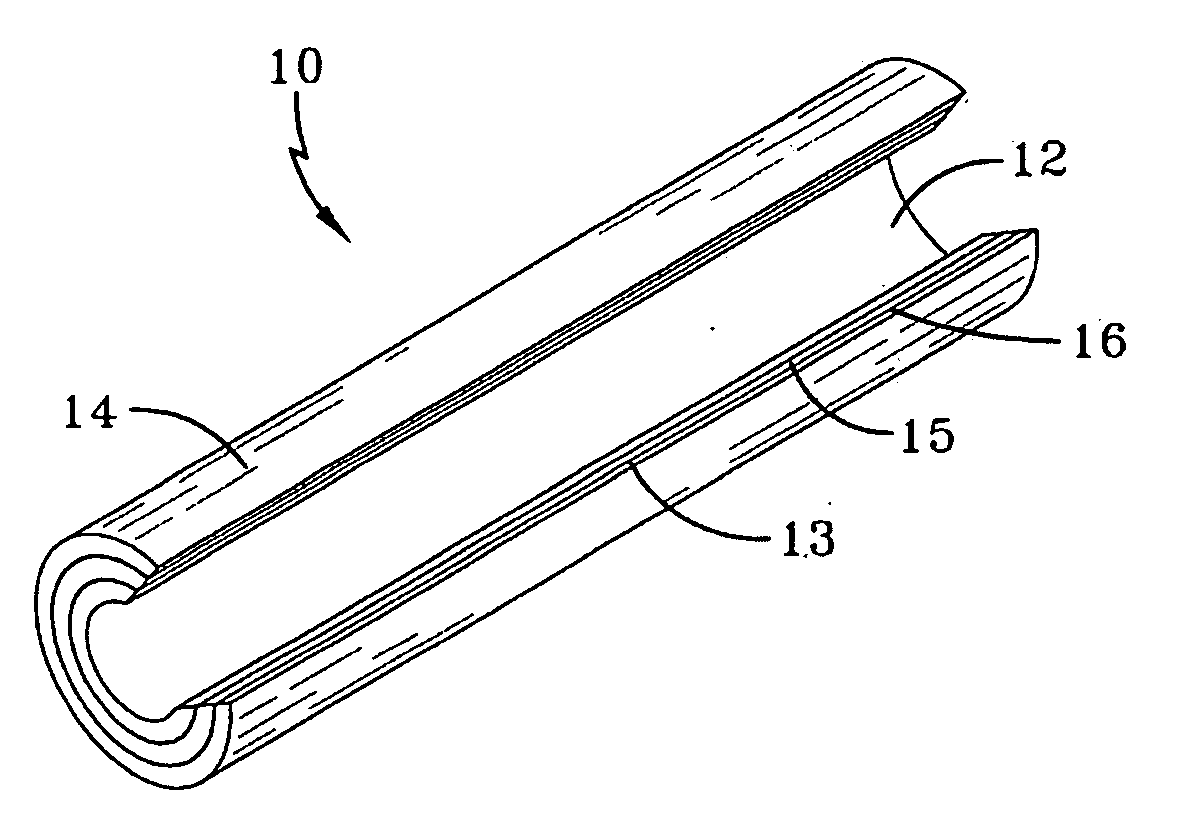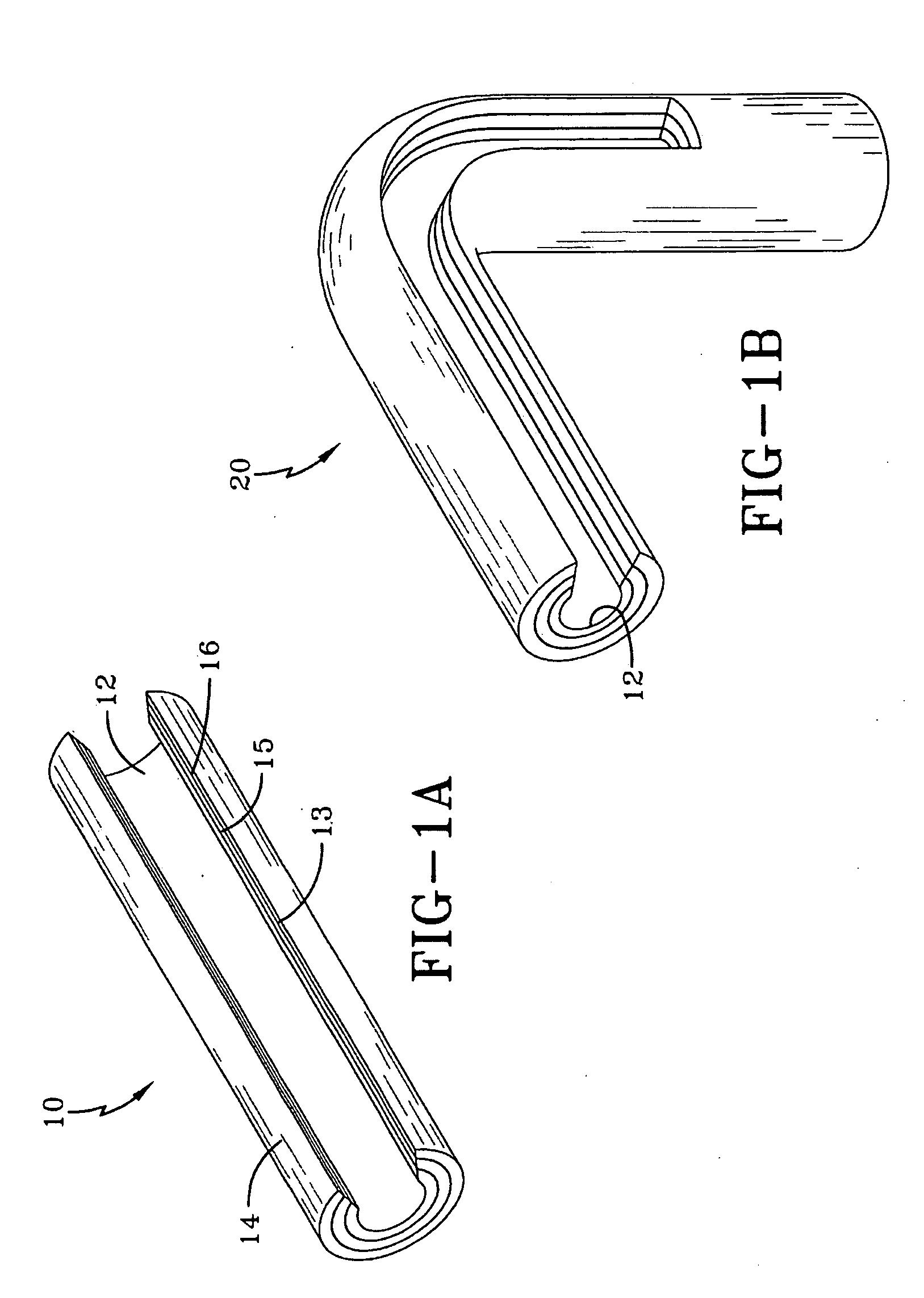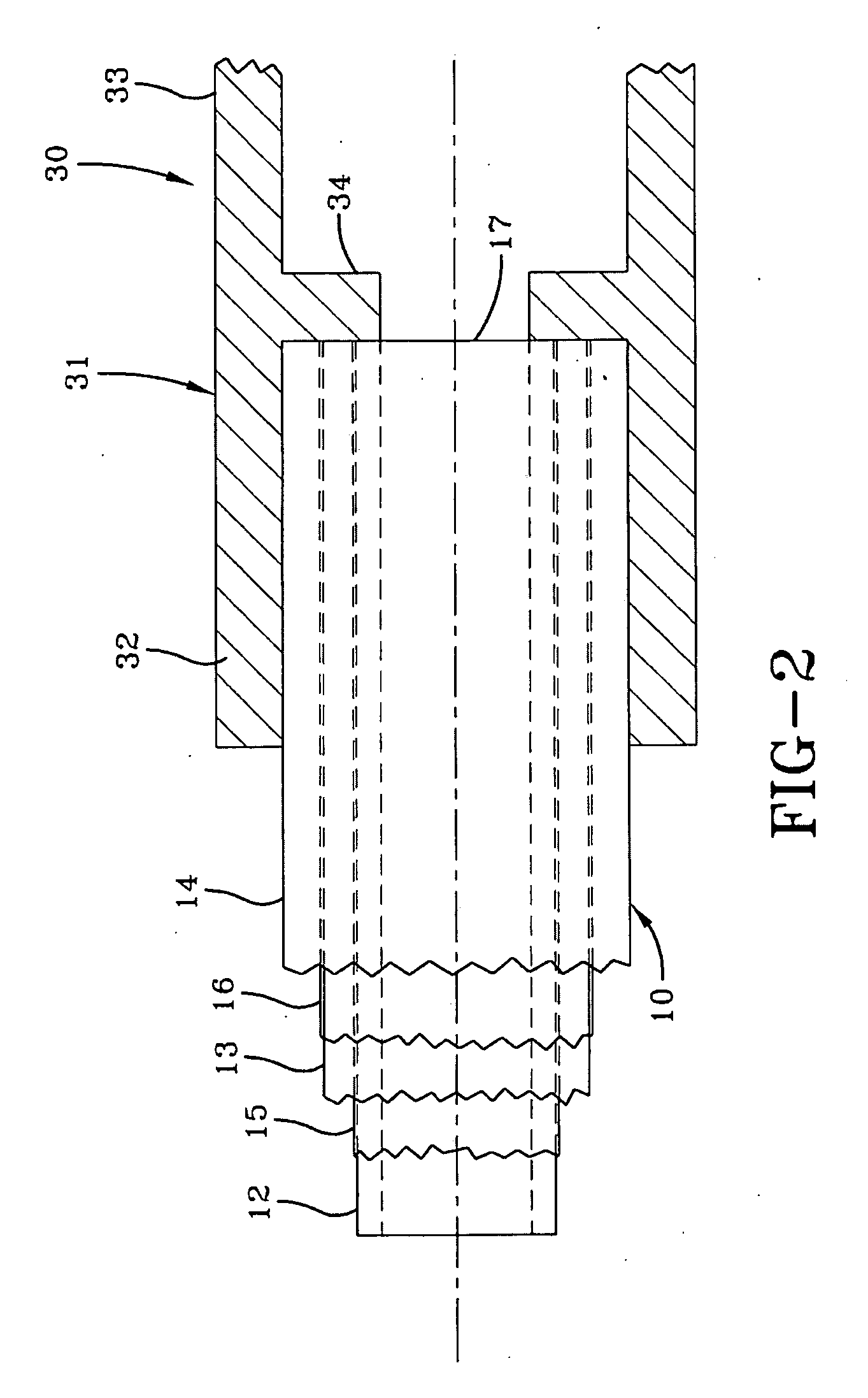PVC/CPVC Composite Pipe With Metal Interlayer And Process For Making It
a technology of composite pipes and metal layers, applied in the field of composite pipes, can solve the problems of tearing polymer, collapsing inner conduits, cohesive failures, etc., and achieve the effect of reducing the strength of the adhesive bond and minimizing the oxidation of the inner condui
- Summary
- Abstract
- Description
- Claims
- Application Information
AI Technical Summary
Benefits of technology
Problems solved by technology
Method used
Image
Examples
Embodiment Construction
[0046]Referring to the figures in the drawing and particularly to FIG. 1A, there is shown a composite pipe referred to generally by reference numeral 10; which comprises an extruded inner conduit 12 of PVC / CPVC; a metal conduit 13, preferably of aluminum, or a ferrous metal formed over and overlying the inner conduit 12; an outer conduit 14 of PVC / CPVC extruded over and overlying the metal conduit 13. An inner adhesive layer 15 of the bi-layer adhesive cohesively bonds the metal conduit 13 to inner conduit 12; and an outer adhesive layer 16 of the bi-layer adhesive cohesively bonds the metal conduit 13 to outer conduit 14. The inner and outer conduits may be extruded from the same polymer or different.
[0047]Referring to FIG. 1B, there is shown a length of pipe 20 in which the inner and outer polymer conduits are 19.05 mm (0.75″) nominal diameter, each polymer conduit having a wall thickness of 0.813 mm (0.032″); and, the aluminum interlayer is 0.4 mm (0.016″) thick. This pipe has be...
PUM
| Property | Measurement | Unit |
|---|---|---|
| Temperature | aaaaa | aaaaa |
| Temperature | aaaaa | aaaaa |
| Temperature | aaaaa | aaaaa |
Abstract
Description
Claims
Application Information
 Login to View More
Login to View More - R&D
- Intellectual Property
- Life Sciences
- Materials
- Tech Scout
- Unparalleled Data Quality
- Higher Quality Content
- 60% Fewer Hallucinations
Browse by: Latest US Patents, China's latest patents, Technical Efficacy Thesaurus, Application Domain, Technology Topic, Popular Technical Reports.
© 2025 PatSnap. All rights reserved.Legal|Privacy policy|Modern Slavery Act Transparency Statement|Sitemap|About US| Contact US: help@patsnap.com



